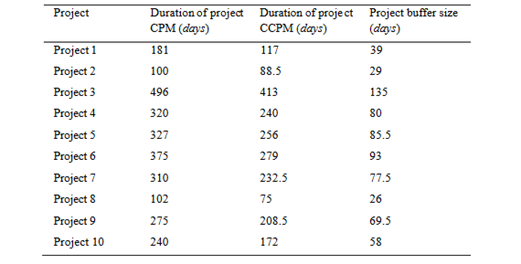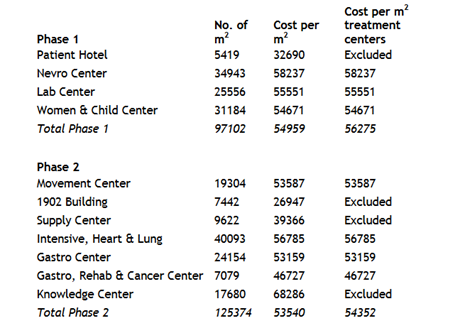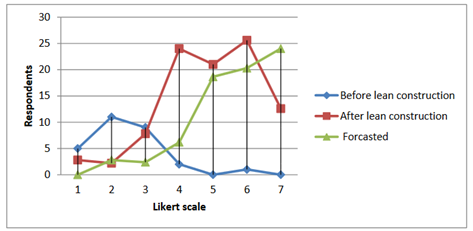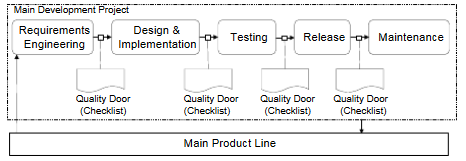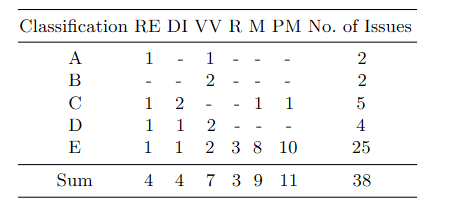Critical Chain Project Management (CCPM) Method Construction Project Management
Introduction
The construction sector is a crucial section of the industry and the building of the gross income of a nation. In Hong Kong, the construction sector has facilitated an economic significance over the years. In 2016, the construction industry accounted for 6% of the total gross domestic product and offering employment to over 330,000 persons (Dykstra, 2018, p. 33). The complexity of construction projects develops many constraints due to time, environmental customs, costs, materials and regulations which makes it imperative for the projects to have skilled management. Project management is considered to be at the helm of facilitating a successful construction project. The relevance of project management has been evidenced when construction projects are faced with changes that call for contingency plans (Verzuh, 2015, p. 45). Despite focusing on the technical aspects of execution and budgeting, it also addresses the people component whereby it requires the project managers to collaborate and work with the workers, stakeholders and the community. Studies suggest that construction project management is the process of controlling and coordinating a project from initial phase to the completion stage based on the requirements of the client which focus on objectives of cost, time, quality, function and utility. Therefore, effective construction management is a relevant aspect in determining the success of projects.
Aims and Objective of the Portfolio
This paper aims at examining three topics in the field of construction project management. The topics will include the Critical Chain Project Management (CCPM), Lean Construction Management and Waterfall/ or Traditional Project Management. For each topic, there will be an evaluation of existing construction practices, problems encountered and the possible solutions.
- Critical Chain Project Management (CCPM): The Case of Marinas Infrastructure in Poland
CCPM was developed due to the presence of chronic problems which faced the existing approaches, methods and even software like high costs, delays and urgency to reduce specifications among other unwanted effects prevalent in projects. The incapability to handle such issues requires an inclusive and rigorous analysis which gives the opportunity to implement the critical chain project management approach. Previously, project management was applied for project management scheduling but emerged to be used in other sectors of project management. The application of these techniques has been faced with challenges like the estimation of time buffer whereby there is a level of subjectivity during the calculation of the parameter (Araszkiewicz, 2017, p. 34). Many of the construction projects employ a model of project management whereby after presenting the scope of the problem and subdividing the work bundles are denoted as activities that will be carried out to ensure delivery of final product.
In a multi-project environment, the aspect of scheduling construction projects is implemented through the application of critical chain method. Through a case study of marinas infrastructure in Poland, it has presented a construction programme that utilized the CCPM approach. The construction project aimed to develop a functionality network that is connected with ports and marinas. A crucial feature among of such a multi-project environment is the emphasis on objectives, benefits, management and centralization of the construction programme (Verzuh, 2015, p. 58). Management of the project entailed the realization and controlling of connections, resources prioritization and minimization of the effort associated with the management of all activities entailed in the construction.
It is noted that the analyzed programme entailed the development of a sailing route which observed the recommended conditions. The project scope entailed the reconstruction and development of four existing marinas as well as the construction of six new ones. The project goal was to construct a unique and super regional tourist channel that boosted the economic development of water tourism in polish Baltic seaside (Goldratt, 2017, p. 76). The goal was achievable through implementation of an inclusive construction programme which has been developed by infrastructural projects which are organizationally and capitally connected. There was a partnership which was signified the presence of a programme leader and was ready for the action plan. The construction projects were to be executed at nine different areas and were located about twelve kilometers from each other. In the organizational structure, there was a programme management office (PMO) which coordinated all the projects. At the PMO, the personnel included technical coordinator, project manager, finance officer and administrator. Investment expenditures amounted to over $ 100 million which comprised costs from undertaking construction works, preparation of application documents, design documentation, making compulsory audits among others which were dependent on subsidies from EU funds(Ma et al. 2014, p. 52). The PMO ensured the management of compliance of project execution with the financing contract and submission to the completion deadlines. During the preparation of the project, an assessment on quality and analysis of risks for each project was carried out.
Based on the vast number of tasks that were performed in the project, the main risks that were identified was investment completion. The technicality of the development project from where the works were planned to facilitate execution in marina basins was vital for the evaluation of that risk. The construction works depended on weather conditions, so there was a need to assess the risk of deadline postponement of the works to estimate the likelihood of occurrence and impact on the project (Goldratt, 2017, p. 79). The PMO performed systematic monitoring of the identified risks. Liquidated damages were provided from draft contracts with subcontractors as a way of reducing the likelihood of time risk. This was due to the failure of carrying out work by the adopted schedule. To curb the time risk, the engineering team had to control the regulate performance compliance of each investment with materials and each contract was to have a financial schedule. During the project planning stage, the traditional critical project management was used to prepare the construction schedules though MS project to add the technical nature of the investments. Modification of the prepared project schedule was facilitated according to the principles of the CCPM (Ma et al. 2014, p. 75). The project focused on the safety of sailing and there had to be a strategic distance within the individual units of the routes of tourists. Thus, the focus was emphasized on two undertakings whereby failing to complete the project would affect the construction of the route and raise safety criterion that would cause increased distance from ports that are far from the adopted one. According to Table 1 below, the CCPM adopted a procedure algorithm that modified the schedule of ten projects.
Table 1: Modification of the schedules of projects
From the task duration projections, the completion probability according to the approved deadline, tasks durations normal distribution, the optimum tasks durations was calculated and changes on each project schedules made. A technique of the Finish-Start relationship was adopted to estimate the buffer size while having delays in the relationships.
Identification of the critical resources acted as the next procedure. The critical resources within the construction filed were the equipment used to perform dredging works on water. The use of such equipment required planning of work due to the problems caused by environmental aspects that cause time limits in performing the work (Ma et al. 2014, p. 57). Another critical resource was the group of inspectors. Based on the construction programme, each project work was performed by various contractors and a single contract was used to plan for investor’s supervision after completion by the project manager. The next analysis phase focused on setting construction works that are featured in the programme in a manner that the dredging works are included in the critical resources such as the dredging equipment and hypo technical works supervision (Goldratt, 2017, p. 90). Later, there was the implementation of capacity buffer constraints to cover due dates for projects initiation which required the use of critical resources. By using the traditional approaches, the planned execution time of completing the project was 796 days while using the CCPM; the investment planning construction programme took 581 days. This showed that the construction schedule had a difference of 215 days which indicated project benefits due to a shorter time of implementation, excellent resource coordination and good project management to complete work before the deadline.
- Lean Construction Management at Phase 2 of St. Olavs Hospital
In civil engineering lean construction has emerged as the novel way as it combines the best lean practices. In construction, there has been increased complexity due to the urgency for coordination among stakeholders, the adequacy of material process flow and the concerns on architecture production. Due to such complexities, the result has been high financial losses. Through lean technology practice, it will help reduce such issues by providing solutions in construction earlier. The main principle of lean technology is that it is eradicating waste and increasing profits when adopted. It is an evolving innovative technology that focuses on all the idleness in the construction process and develops new innovative solutions (Dykstra, 2018, p. 59). In the construction industry, the adoption of lean technology can observe five main elements which result in the high quality of deliverables. They include the classification of materials, material layout standardization, straightening of materials and grouping of work. One major technique in lean construction is the last planner which is reverse phase schedule. It enhances pragmatic projections while reducing redundancy in construction procedures.
By considering the lean construction practices, a good example is evidenced in the case study of the integrated hospital at St Olavs in Norway. In the case study, phase 1 of the St. Olavs integrated hospital employed a traditional approach to project management. Considering phase 2, it was made to incorporate the lean construction principles to offer innovative solutions because phase 1 experienced poor performance due to delays and cost overruns. The techniques employed included simultaneous engineering principles and the last planner. The technique of the last planner was considered to develop a reliable and predictable flow of work in construction which increased reliability and influenced rework positively (Brioso, 2015, p. 76). Based on concurrent engineering, it emphasized on utilizing various stakeholders like contractors, architects and engineering consultants. Construction of phase 2 started in 2005 and by 2010 most of the work had been completed apart from constructing the last center. Phase 2 required a cost of about 1 billion euro as it was to be constructed around centers, new buildings had to be constructed and it involved various engineers, architects, contractors and subcontractors.
Considering phase 1 of the construction project, it went beyond the planned schedule and took more working hours per meter square because of poor productivity of quality. Based on this issue, a lot of time was consumed on tidying up, waiting and transport work. Therefore, phase 2 involved embracing lean construction in the systems and procedures. First, the work was divided and planned with the aim of letting the various disciplines work separately in an area and handle the interfaces among disciplines. A big portion of the hospital’s floor area was made up of small rooms with little space for all craftspeople to work concurrently. Therefore, there was an optimal sequence of work operation among various disciplines. A quasi-pull system was used to give a signal to the start of the other work after the first is completed (Erol et al. 2017, p. 243). There was a strategy of planning meetings to ensure all construction work commence as planned. The construction stakeholders battled the volume paralysis that reduces progress control in projects that have large buildings and makes it difficult to track the work process and workers. In this project, the phase 2 project was broken down into phases of control areas and their work packages to facilitate a detailed follow-up.
Lean construction fosters quality control during the project. The engineers and architects had to test sub-systems and assemblies when they are installed and carrying out completion tests in work sections when they are completed. The construction employed ‘rescue squads’ were to ensure quality control by identifying defects in the construction and leave room for the contractor to focus on the front line progress. It was a lean idea that ensured zero defects and reduced time wasting and work in rectifying the defects. By having more open communication among key personnel like project owner, project manager, engineers, contractors and consultants ensured all construction issues could be handled at the surface (Oakland and Marosszeky, 2017, p.65). The project observed the lean engineering technique by focusing on the principles of the last planner which had to be implemented. There were fixed engineering teams for particular rooms like technical rooms, examination rooms and patient rooms who brought various issues that had to be solved and this improved the construction quality of the area. There was co-engineering with contractors who applied the simultaneous approaches of engineering. The contractors were involved in engineering decisions and carrying out design construction which ensured their expertise merge with the technical and system knowledge of the engineering consultants.
The phase 2 project experienced some difficulties, but there was a positive impact on lean construction approach as there was reduced time of building and the projects remained on schedule. By considering phase 1, it took an average of 41.63 hours/m2 to complete the small building area while phase 2 which has a bigger construction area took 40.32 hours/m2. This implied that the lean construction techniques had positive effects when considering the bigger building area of phase 2 (Meng, 2019, p. 6). According to the sub-contractor, there was a reduction of electrical installation in 2.2 hours/m2 in phase 2 that employed lean construction while considering phase 1 which took 3.5 hours/m2. It is understood that costs are related to the time of building whereby reduced time takes reduced costs unless there is poor quality work.
The figure below illustrates the cost details for the buildings in phase 1 and 2.
Table 2: Costs per building
By making the comparison to the total numbers of the whole area per phase, it is evident that there was a reduction of 2.7% in cost per meter square. When also including the patient center of treatment there is a reduction of 3.5%.
Figure 1: St. Olavs performance comparisons from lean construction practices
From the figure above, it was evident that there was an improvement from utilizing the lean construction processes at the hospital. It offered an integrated and systematic outline that entailed various dimensions and features that improved the performance of the hospital.
- Waterfall/ or Traditional Project Management
The waterfall method is a simple technique of planning construction projects that lists all the tasks in a sequential order similar to a waterfall. In the construction sector, the construction team has to complete the initial or current task and then shift to the next phase. Project managers consider the waterfall approach as a straightforward technique which is easier to implement. The approach comprises of Requirement Determination stage, Design stage, Implementation stage, verification stage and maintenance stage (Harrison and Lock, 2017, p. 67). The benefit of a waterfall approach is that it offers a structured methodology which facilitates easier evaluation of progress due to defined milestones.
To understand the issues in this technique, the investigation was made on case analysis of Ericsson AB which is a firm located in Sweden and specializes in large scale development of software. The case study examined the implementation of the waterfall approach in the industrial development of software and the relation of the most critical issues. At Ericsson AB, the waterfall model started at the phase engineering requirements, then design and implementation, testing phase then release stage and to implementation.
Figure 2: Waterfall approach at the company
In the requirements engineering, it focused on identifying the needs of customers and documenting on a high level of abstraction. Refining followed to ensure the requirements are employed as inputs in the next phase. The selected requirements relied on the resources available for the project. The parts of old products were used as inputs in the requirement stage to make new products. Within the design phase, there was creation and documentation of the system architecture. The actual system development then followed. Evaluation of the architecture was done by the quality checklist and there was the determination of variations of requirements when related to the previous product scope and quality (Vijayasarathy and Butler, 2016, p. 88)
. In the testing phase, there was an assessment of the system integration based on quali
In the case study, about 38 issues were identified.
Table 3: No. of issues in the classification
The issues were in the stage of requirements engineering (RE), verification and validation (VV), release (R), design and development (DI), project management (PM) and maintenance (M). The problems. During the development process, there was a distribution of time in various phases. It was evident that the system implementation phase took the least time.
Table 4: Time distribution (Duration) over Stages (%)
Through the waterfall approach, it was easier to perform testing based on the aspects listed in the functional specification. It was also easier to carry out performance measurement and technical documentation that would ensure a faster speeding of the development process.
Conclusion
Project management is considered to be at the helm of facilitating a successful construction project. The relevance of project management has been evidenced when construction projects are faced with changes that call for contingency plans. CCPM was developed due to the presence of chronic problems which faced the existing approaches, methods and even software like high costs, delays and urgency to reduce specifications among other unwanted effects prevalent in projects. Through a case study of marinas infrastructure in Poland, presented a construction programme that utilized the CCPM approach. The construction project aimed to develop a functionality network that is connected with ports and marinas. A crucial feature among of such a multi-project environment was the emphasis on objectives, benefits, management and centralization of the construction programme. By using the traditional approaches, the planned execution time of completing the project had a difference of 215 days which indicated project benefits due to a shorter time of implementation, excellent resource coordination and good project management to complete work before the deadline.
In the construction industry, the adoption of lean technology can observe five main elements which result in the high quality of deliverables. They include the classification of materials, material layout standardization, straightening of materials and grouping of work. By considering the lean construction practices, a good example is evidenced in the case study of the integrated hospital at St Olavs in Norway. Phase 2 of the project was made to incorporate the lean construction principles to offer innovative solutions because phase 1 experienced poor performance due to delays and cost overruns. Phase 2 which has a bigger construction area took 40.32 hours/m2. This implied that the lean construction techniques had positive effects when considering the bigger building area of phase 2. It was evident that there was an improvement from utilizing the lean construction processes at the hospital. It offered an integrated and systematic outline that entailed various dimensions and features that improved the performance of the hospital. The waterfall approach comprises of Requirement Determination stage, Design stage, Implementation stage, verification stage and maintenance stage. Its benefits are that it offers a structured methodology which facilitates easier evaluation of progress due to defined milestones. At Ericsson AB, the waterfall model started at the phase engineering requirements, then design and implementation, testing phase then release stage and to implementation. Through the waterfall approach, it was easier to perform testing based on the aspects listed in the functional specification.





